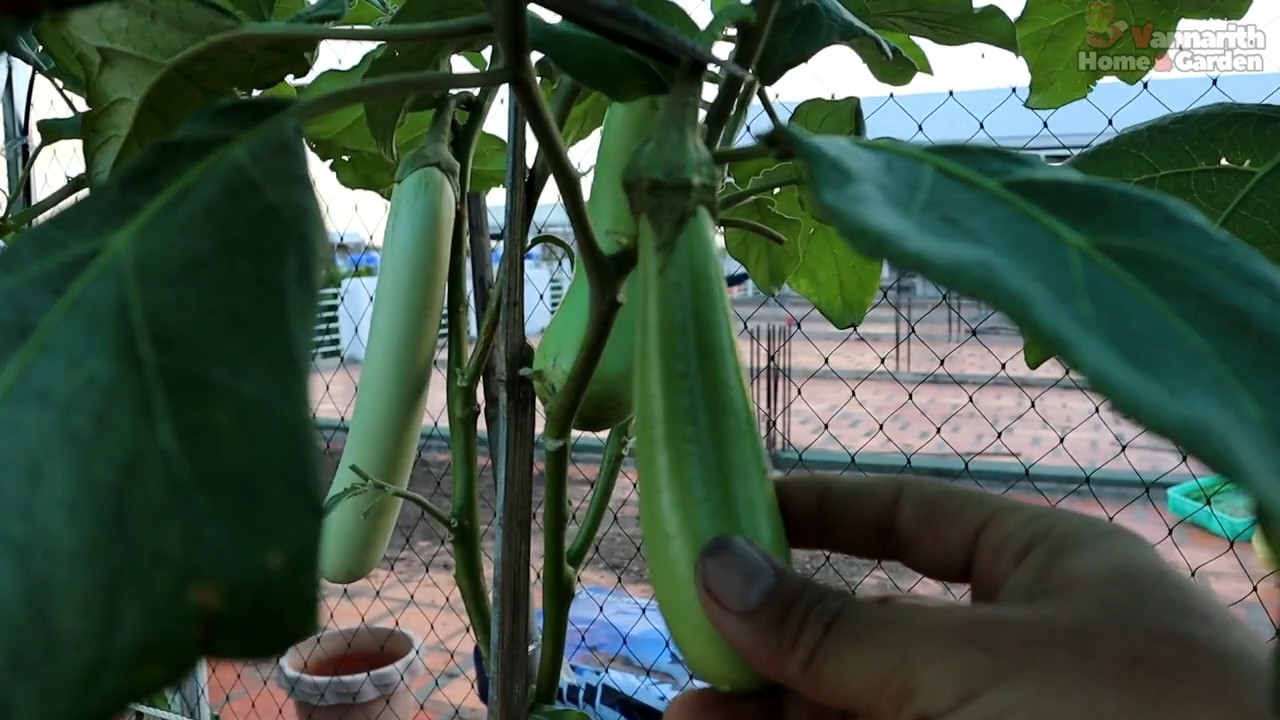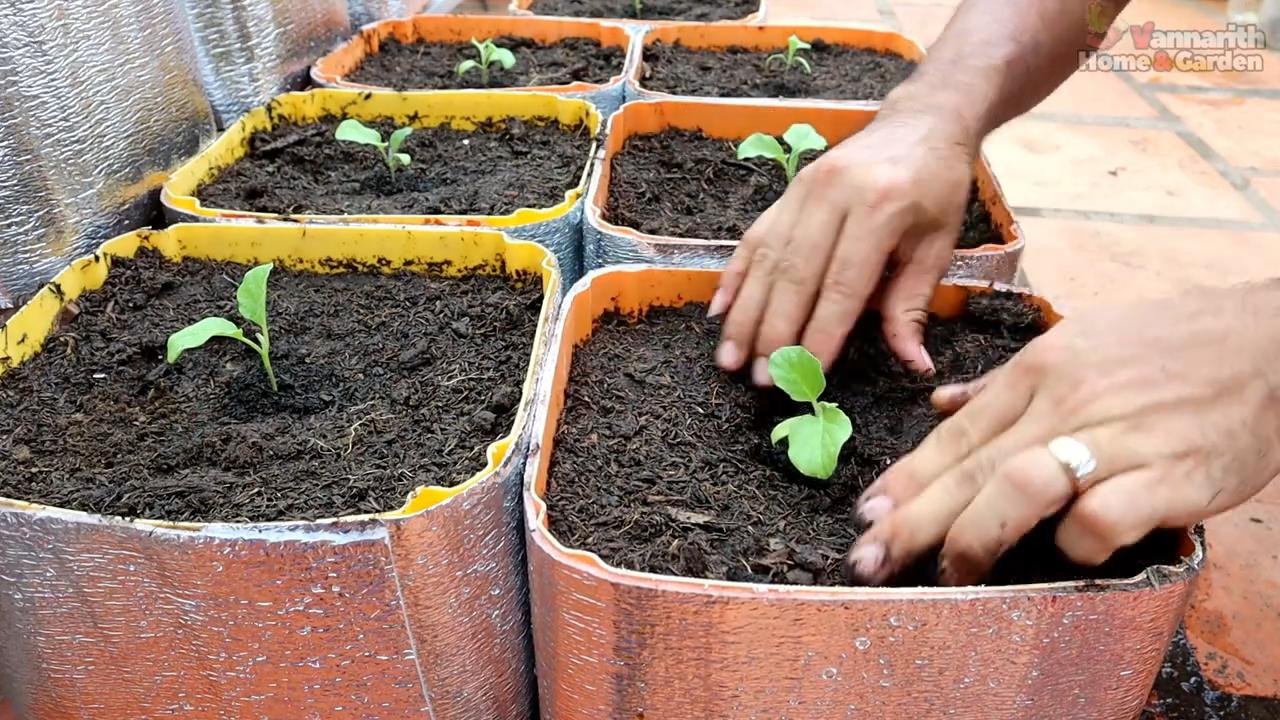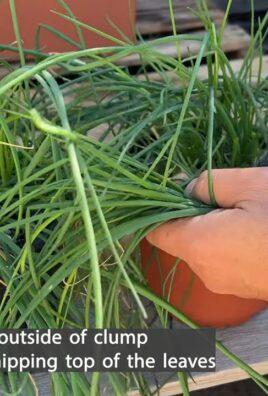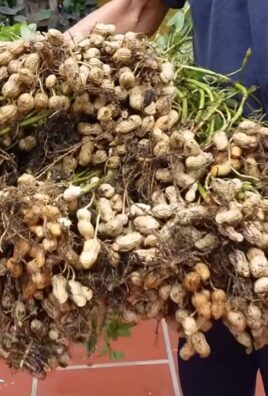Grow Eggplants Indoors Beginner? Absolutely! Imagine harvesting plump, juicy eggplants right from your windowsill, even when the snow is falling outside. Sounds like a dream, right? Well, it’s a dream that can become a reality with a little know-how and some simple DIY techniques. For centuries, gardeners have sought ways to extend the growing season, and bringing plants indoors is a time-honored tradition. While traditionally, eggplants thrived in warm climates, modern innovations and clever hacks now allow even beginners like you and me to enjoy these delicious fruits year-round, regardless of our geographical location.
Why should you bother learning how to grow eggplants indoors beginner style? Because fresh, homegrown produce is simply the best! Store-bought eggplants often lack the vibrant flavor and satisfying texture of those picked straight from the vine. Plus, growing your own food is incredibly rewarding, connecting you to nature and providing a sense of accomplishment. This article is packed with easy-to-follow DIY tricks and tips that will guide you through every step of the process, from selecting the right seeds to troubleshooting common problems. Get ready to transform your home into a mini-farm and enjoy the taste of summer, no matter the season!

Growing Eggplants Indoors: Your Beginner’s Guide
Hey plant friends! Are you tired of the dreary winter and longing for fresh vegetables? Then I have just the thing for you: growing eggplants indoors! Yes, it’s really possible, and it’s not as hard as you might think. I’ll show you how, with a little patience and the right tricks, you can harvest your own eggplants, even when there’s snow outside. Let’s get started!
What You Need: The Preparation
Before we start planting, we’ll need the right equipment, of course. Here is a list of everything you’ll need for your indoor eggplant project:
- Eggplant seeds: It’s best to choose varieties that are suitable for growing in pots. Dwarf or bush eggplants are a good choice.
- Seed starting mix: This is low in nutrients and loose, ideal for germination.
- Seed starting pots or trays: Small pots or trays with drainage holes are perfect.
- Larger pots: Once the eggplant plants get bigger, they’ll need more space. Pots with at least a 20-liter (5-gallon) capacity are ideal.
- Potting soil: A nutrient-rich soil that retains water well.
- Grow light: Eggplants need a lot of light, especially in winter. A grow light provides the necessary brightness.
- Spray bottle: For moistening the soil.
- Fertilizer: A liquid fertilizer for vegetables is ideal for supplying the plants with nutrients.
- A small brush: For pollinating the flowers (more on that later).
- Optional: Heating mat: Speeds up germination.
Sowing and Germination: The Start to Eggplant Happiness
Now let’s get down to it! Sowing is the first step to your own eggplants.
- Prepare the seed pots: Fill the seed starting pots or trays with seed starting mix. Press the soil down lightly.
- Sow the seeds: Place 2-3 seeds in each pot. Cover the seeds with a thin layer of soil (about 0.5 cm or ¼ inch).
- Watering: Gently moisten the soil with a spray bottle. The soil should be damp, but not wet.
- Warmth and light: Place the pots in a warm spot (approx. 25-30°C / 77-86°F). A heating mat can be very helpful here. Place the pots under a grow light or by a bright window.
- Patience: Germination usually takes 1-2 weeks. Keep the soil moist and wait patiently.
Pricking Out: Giving the Small Plants More Space
Once the seedlings have developed their first true leaves (after the initial seed leaves), it’s time for “pricking out.” This means we are moving the small plants into larger pots so they have more room to grow.
- Prepare the larger pots: Fill the larger pots with potting soil.
- Select the strongest plant: In each starter pot, choose the strongest plant. You can gently remove the others.
- Transplanting: Using a small spoon or a dibber, carefully dig the plant out of the starter pot. Be careful not to damage the roots.
- Placing in the larger pot: Place the plant in the larger pot and fill the pot with soil. Press the soil down lightly.
- Watering: Gently water the plant.
Care: Helping Your Eggplants Thrive
Proper care is crucial for the success of your eggplant project. Here are the most important points:
- Light: Eggplants need a lot of light, at least 6-8 hours per day. If you don’t have a grow light, place the plants by the brightest window possible.
- Watering: Water the plants regularly, but avoid waterlogging. The soil should always be slightly moist.
- Fertilizing: Feed the plants every 2-3 weeks with a liquid vegetable fertilizer. Follow the dosage instructions on the package.
- Temperature: Eggplants like it warm; temperatures between 20 and 25°C (68-77°F) are ideal.
- Pollination: Eggplants are self-pollinating, but pollination can be assisted by wind or insects. Since we have the plants indoors, we need to lend a hand. Take a small brush and gently stroke over the flowers to distribute the pollen. It’s best to do this at midday when the flowers are open.
- Staking: As the plants get larger and bear fruit, they may need a stake to keep from falling over. You can use a bamboo stick or another type of support.
- Pests: Watch out for pests like aphids or spider mites. If infested, you can treat the plants with an organic pesticide.
Harvest: The Reward for Your Hard Work
After a few months (about 3-4 months after sowing), you can finally harvest your own eggplants!
- Recognizing ripeness: The eggplants are ripe when they have a glossy, deep purple color and yield slightly to pressure.
- Harvesting: Cut the eggplants with a sharp knife or scissors. Leave a small piece of the stem on the fruit.
- Enjoy: Now you can enjoy your homegrown eggplants! Whether grilled, fried, or in a casserole – they taste simply delicious.
Common Problems and Solutions: Don’t Panic!
Even when growing eggplants indoors, problems can arise. Here are some common issues and how to solve them:
- Yellow leaves: Yellow leaves can be a sign of a nutrient deficiency. Fertilize the plants with a liquid fertilizer.
- Blossoms falling off: This can be due to too little light, low temperatures, or a lack of pollination. Ensure adequate light and warmth, and pollinate the flowers regularly.
- Pests: If infested with pests, you can treat the plants with an organic pesticide.
- Stunted growth: Stunted growth can be due to too little light, too little water, or too few nutrients. Ensure optimal conditions and fertilize the plants regularly.
Variety Recommendations for Indoor Growing: The Agony of Choice
Not all eggplant varieties are equally suited for indoor growing. Here are some varieties I can recommend:
‘Black Beauty’: A classic eggplant variety with large, dark purple fruits. It needs a bit more space but is very productive.
‘Patio Baby’: A dwarf eggplant variety that is ideal for growing in pots. It produces many small, delicious fruits.
‘Fairy Tale’: A pretty eggplant variety with striped fruits. It is robust and productive.
‘Little Fingers’: An elongated eggplant variety with tender fruits. It matures early and is well-suited for growing in pots.

Conclusion
So, there you have it! Growing eggplants indoors, even for beginners, is not only achievable but incredibly rewarding. We’ve walked through the entire process, from selecting the right variety to troubleshooting common issues. But why should you dedicate your precious indoor space to these purple beauties? The answer is simple: fresh, flavorful eggplants, grown with your own two hands, offering a taste and satisfaction that store-bought varieties simply can’t match.
Imagine biting into a perfectly roasted eggplant, its flesh tender and sweet, knowing that you nurtured it from a tiny seed to a culinary masterpiece. That’s the power of DIY gardening, and it’s especially potent when it comes to eggplants. Plus, controlling the environment indoors allows you to extend the growing season, enjoying fresh eggplants long after your outdoor garden has succumbed to the cold.
But the benefits extend beyond just taste. Growing your own food is a fantastic way to connect with nature, reduce your carbon footprint, and gain a deeper appreciation for the food we eat. It’s a therapeutic activity that can reduce stress and boost your mood. And let’s not forget the educational aspect – it’s a wonderful way to teach children about plant life cycles and the importance of sustainable living.
Now, before you rush off to sow your seeds, consider these variations to personalize your indoor eggplant adventure.
* Experiment with different varieties: While we’ve focused on compact varieties suitable for indoor growing, don’t be afraid to explore other options. ‘Fairy Tale’ eggplants, with their beautiful striped skin, or ‘Little Fingers’ eggplants, known for their prolific yields, can add visual appeal and culinary diversity to your indoor garden.
* Explore hydroponics: For a more advanced approach, consider growing your eggplants hydroponically. This soilless method can accelerate growth and increase yields, but it requires a bit more technical knowledge and equipment.
* Companion planting: Even indoors, companion planting can benefit your eggplants. Basil, for example, is known to repel pests and improve the flavor of eggplants. Marigolds can also deter nematodes and other soil-borne pests.
Ultimately, the best way to learn is by doing. Don’t be afraid to experiment, make mistakes, and learn from your experiences. Growing eggplants indoors is a journey, not a destination. Embrace the challenges, celebrate the successes, and most importantly, have fun!
We are confident that with the knowledge you’ve gained from this guide, you’re well-equipped to embark on your own indoor eggplant growing adventure. So, grab your seeds, prepare your pots, and get ready to experience the joy of harvesting your own homegrown eggplants.
We encourage you to try this DIY trick and share your experiences with us! Post pictures of your indoor eggplant gardens on social media using the hashtag #IndoorEggplantGarden, or leave a comment below to let us know how it’s going. We can’t wait to see your progress and learn from your insights. Happy growing!
Frequently Asked Questions (FAQ)
1. What are the best eggplant varieties to grow indoors for a beginner?
For beginners, compact and self-pollinating varieties are ideal. ‘Patio Baby,’ ‘Hansel,’ and ‘Gretel’ are excellent choices. They are bred to be smaller, more manageable, and produce fruit even without insect pollination, which is crucial indoors. These varieties also tend to mature faster, allowing you to enjoy your harvest sooner. Look for varieties specifically labeled as “container-friendly” or “bush” types.
2. How much light do indoor eggplants really need? Can I use regular grow lights?
Eggplants are sun-loving plants and require at least 6-8 hours of direct sunlight per day. If you don’t have a south-facing window that provides sufficient light, you’ll need to supplement with grow lights. Regular fluorescent or LED grow lights can work, but full-spectrum LED grow lights are the most effective. Position the lights close to the plants (6-12 inches) and adjust as they grow. Monitor your plants for signs of insufficient light, such as leggy growth or pale leaves. If you see these signs, increase the light intensity or duration.
3. What kind of soil is best for growing eggplants indoors?
Use a well-draining potting mix specifically formulated for containers. Avoid using garden soil, as it can compact and retain too much moisture, leading to root rot. A mix of peat moss, perlite, and vermiculite is a good option. You can also add some compost to provide extra nutrients. Ensure the pot has drainage holes to prevent waterlogging.
4. How often should I water my indoor eggplants?
Water your eggplants when the top inch of soil feels dry to the touch. Water deeply, until water drains out of the drainage holes. Avoid overwatering, as this can lead to root rot. During hot weather or when the plants are actively fruiting, you may need to water more frequently. Check the soil moisture regularly and adjust your watering schedule accordingly.
5. Do I need to pollinate my indoor eggplants manually?
While some eggplant varieties are self-pollinating, manual pollination can increase fruit set, especially indoors where there are no bees or other pollinators. You can manually pollinate your eggplants by gently shaking the plant or using a small paintbrush to transfer pollen from one flower to another. Do this in the morning when the flowers are open.
6. What are common pests and diseases that affect indoor eggplants, and how can I prevent them?
Common pests include aphids, spider mites, and whiteflies. Regularly inspect your plants for signs of infestation. You can control these pests by spraying them with insecticidal soap or neem oil. Diseases such as powdery mildew and fungal leaf spots can also affect eggplants. Ensure good air circulation around your plants and avoid overhead watering to prevent these diseases. If you notice any signs of disease, remove the affected leaves and treat the plant with a fungicide.
7. How long does it take for eggplants to mature and produce fruit indoors?
The time it takes for eggplants to mature and produce fruit depends on the variety and growing conditions. Generally, it takes about 60-80 days from transplanting to harvest. Provide adequate light, water, and nutrients to ensure optimal growth and fruit production.
8. What kind of fertilizer should I use for my indoor eggplants?
Use a balanced fertilizer with a higher phosphorus content to promote flowering and fruiting. A 10-20-10 fertilizer is a good option. Fertilize your eggplants every 2-3 weeks during the growing season. Follow the instructions on the fertilizer label for proper application rates.
9. How do I know when my eggplants are ready to harvest?
Eggplants are ready to harvest when they are firm, glossy, and have reached their mature size and color. The skin should be smooth and unblemished. Gently press the skin with your thumb; if it leaves a slight indentation, the eggplant is ripe. Use a sharp knife or pruning shears to cut the eggplant from the plant, leaving a small stem attached.
10. Can I grow eggplants indoors year-round?
Yes, you can grow eggplants indoors year-round, provided you have adequate light, temperature, and humidity. You may need to adjust your growing practices depending on the season. During the winter months, you may need to supplement with grow lights and increase humidity levels.





Leave a Comment